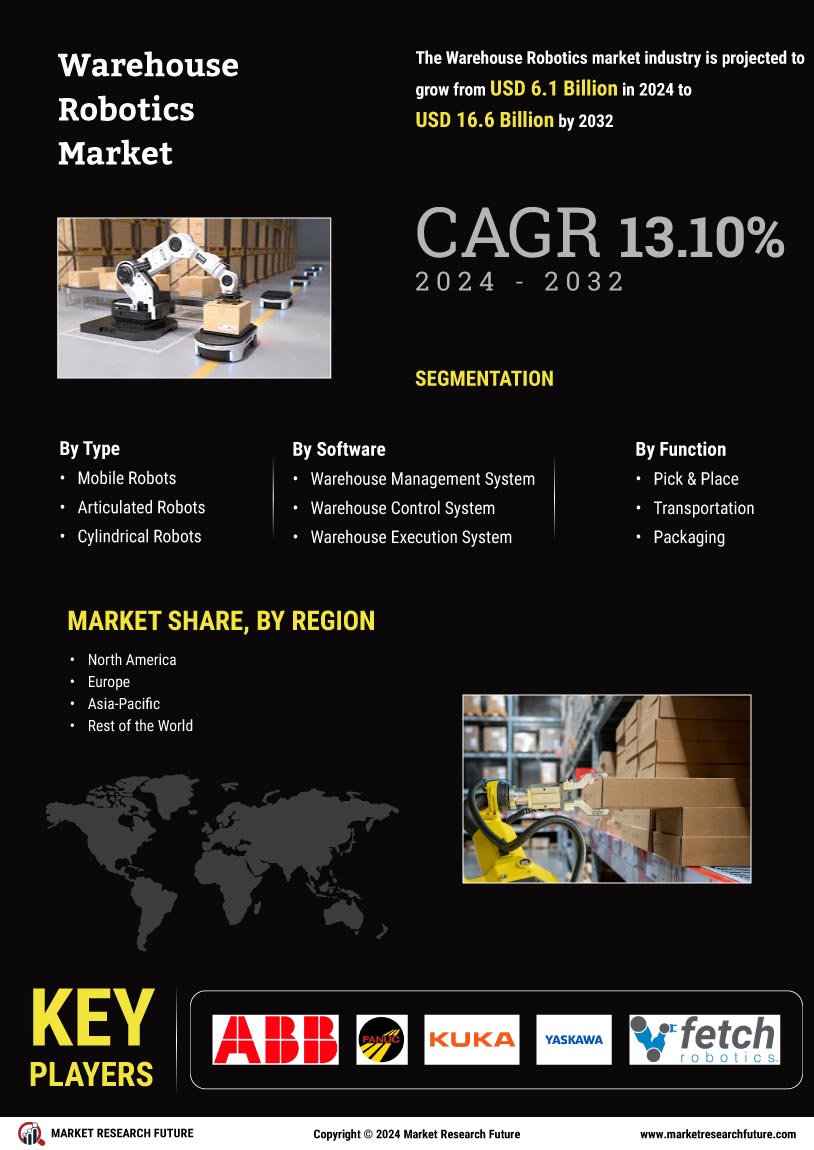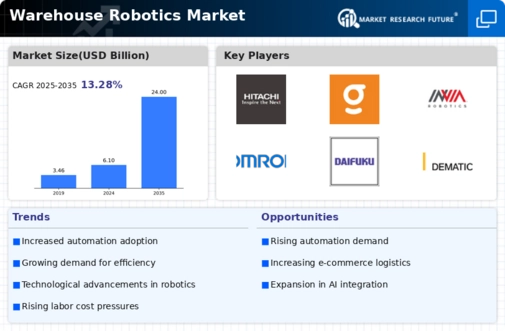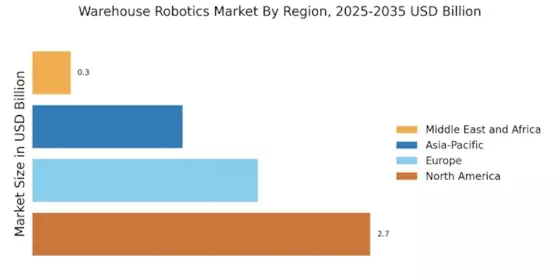Technological Advancements in Robotics
Technological innovations are significantly shaping the Warehouse Robotics Market. Advancements in robotics, such as improved sensors, machine learning algorithms, and enhanced navigation systems, are enabling robots to perform complex tasks with greater efficiency. These technologies allow for better integration of robots into existing warehouse systems, facilitating seamless operations. The market for warehouse robotics is expected to witness substantial growth, with projections indicating a potential increase in market size by over 20% in the next five years. This growth is indicative of the industry's response to the need for more sophisticated and capable robotic solutions.
Labor Shortages and Workforce Challenges
Labor shortages have become a pressing issue across various sectors, including warehousing. The Warehouse Robotics Market is responding to this challenge by providing automated solutions that can operate independently of human labor. As companies face difficulties in hiring and retaining skilled workers, the adoption of robotics appears to be a viable solution. Data suggests that the labor force participation rate has declined, prompting organizations to seek automation as a means to maintain productivity. This trend indicates a growing reliance on robotic systems to fill gaps in the workforce, thereby enhancing the Warehouse Robotics Market.
Rising Demand for E-commerce Fulfillment
The surge in e-commerce activities has led to an increased demand for efficient warehousing solutions. As consumers expect faster delivery times, the Warehouse Robotics Market is experiencing a notable shift towards automation. Companies are investing in robotic systems to streamline operations, reduce labor costs, and enhance order accuracy. According to recent data, the e-commerce sector is projected to grow at a compound annual growth rate of over 15%, further driving the need for advanced warehouse robotics. This trend indicates that businesses are prioritizing automation to meet consumer expectations, thereby propelling the Warehouse Robotics Market forward.
Increased Focus on Supply Chain Resilience
The need for resilient supply chains has become increasingly apparent in recent years. The Warehouse Robotics Market is adapting to this demand by offering solutions that enhance operational flexibility and responsiveness. Companies are investing in robotics to improve inventory management and streamline logistics processes, thereby ensuring that they can quickly adapt to changing market conditions. This focus on resilience is likely to drive further investments in automation technologies, as businesses seek to mitigate risks associated with supply chain disruptions. The Warehouse Robotics Market is thus positioned to benefit from this trend as organizations prioritize robust and agile supply chain solutions.
Growing Emphasis on Data Analytics and Optimization
Data analytics is playing a crucial role in optimizing warehouse operations. The Warehouse Robotics Market is increasingly leveraging data to enhance decision-making processes and improve operational efficiency. By integrating robotics with data analytics tools, companies can gain insights into inventory levels, order patterns, and operational bottlenecks. This data-driven approach allows for more informed strategic planning and resource allocation. As organizations recognize the value of data in driving efficiency, the demand for robotic solutions that incorporate advanced analytics is likely to rise. This trend suggests a promising future for the Warehouse Robotics Market as it aligns with the broader movement towards data-centric operations.

















Leave a Comment